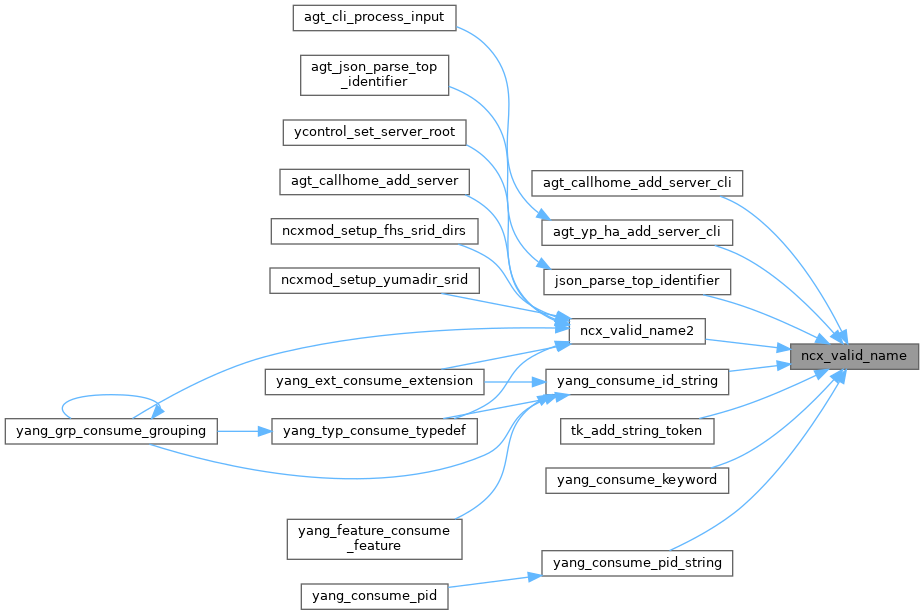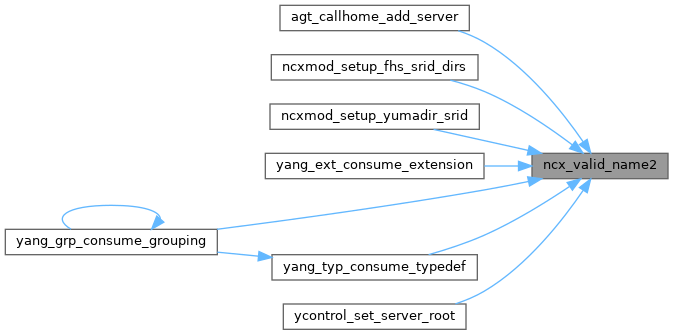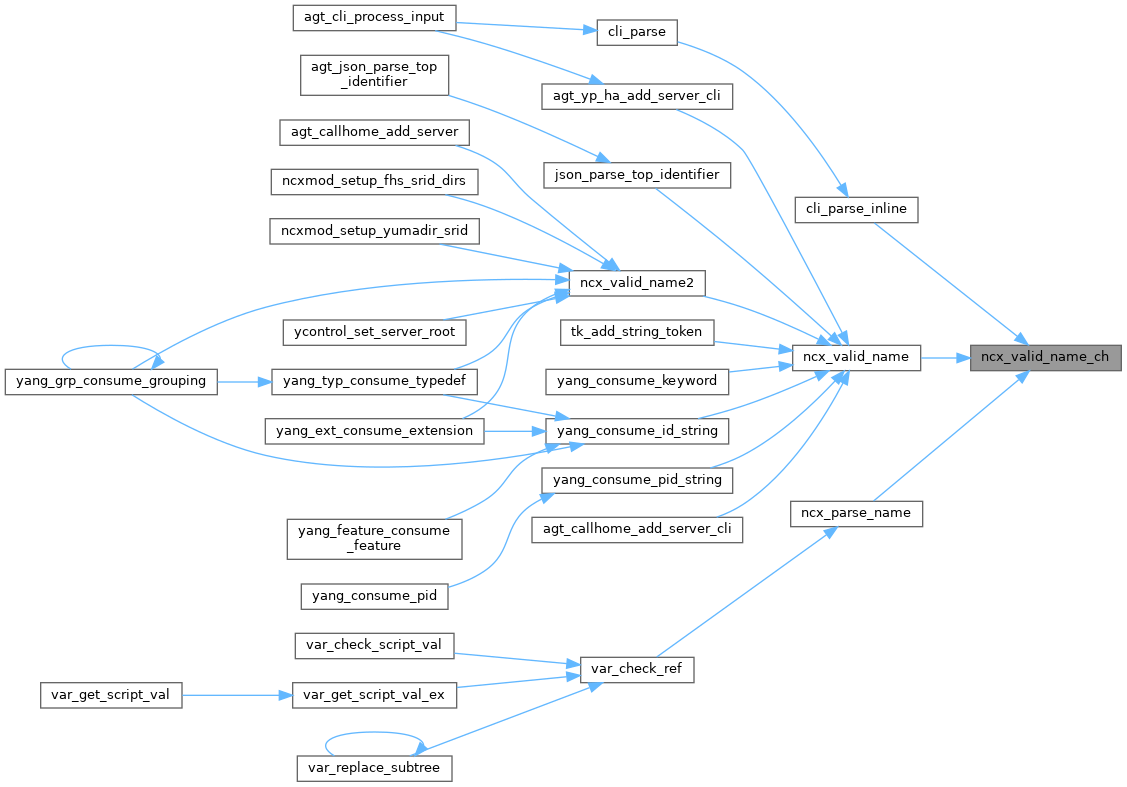 |
yumapro
25.10-3
YumaPro SDK
|
 |
yumapro
25.10-3
YumaPro SDK
|
YANG Identifier validation functions. More...

Functions | |
| boolean | ncx_valid_name_ch (uint32 ch) |
| Check if the character is a valid YANG identifier chara. More... | |
| boolean | ncx_valid_fname_ch (uint32 ch) |
| Check if an xmlChar is a valid NCX name string first char. More... | |
| boolean | ncx_valid_name (const xmlChar *str, uint32 len) |
| Check if an xmlChar string is a valid YANG identifier value. More... | |
| boolean | ncx_valid_name2 (const xmlChar *str) |
| Check if an xmlChar string is a valid NCX name. More... | |
YANG Identifier validation functions.
This implementation limits identifiers to 64 chars. YANG does not allow an identifier to start with a number. It can only start with a letter or an underscore.
| boolean ncx_valid_fname_ch | ( | uint32 | ch | ) |
Check if an xmlChar is a valid NCX name string first char.
| ch | xmlChar to check |

| boolean ncx_valid_name | ( | const xmlChar * | str, |
| uint32 | len | ||
| ) |
Check if an xmlChar string is a valid YANG identifier value.
| str | xmlChar string to check |
| len | length of the string to check (in case of substr) |


| boolean ncx_valid_name2 | ( | const xmlChar * | str | ) |
Check if an xmlChar string is a valid NCX name.
Must be a zero-terminated C string
| str | xmlChar string to check (zero-terminated) |


| boolean ncx_valid_name_ch | ( | uint32 | ch | ) |
Check if the character is a valid YANG identifier chara.
| ch | character to check |
